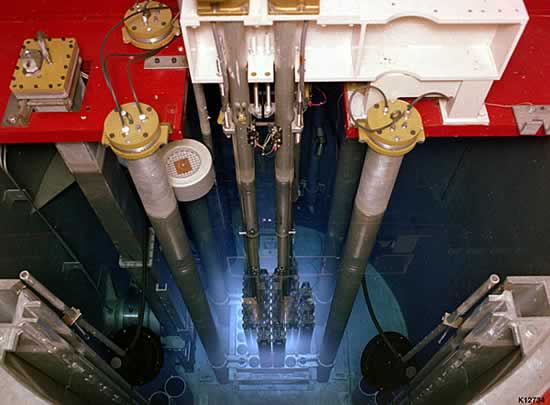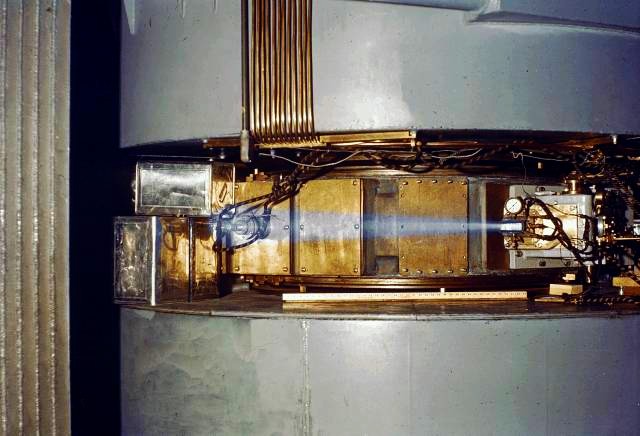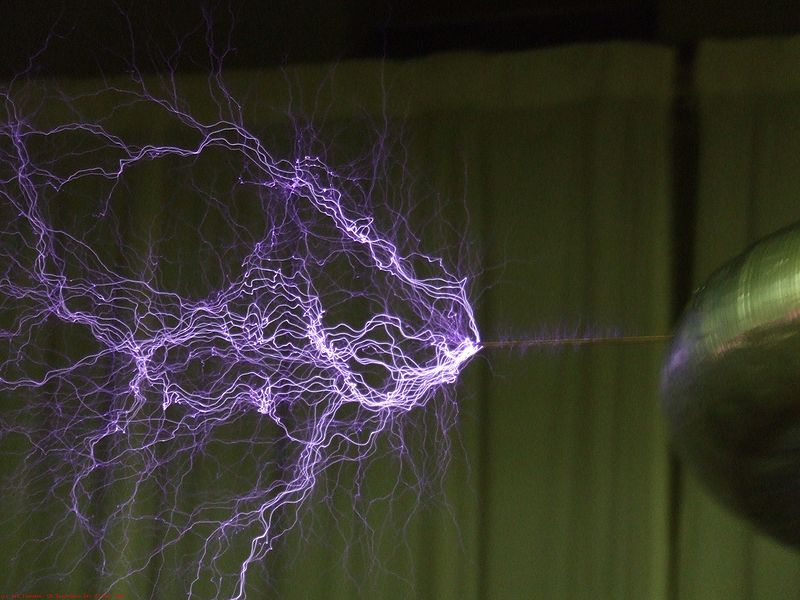Added 2 new A* pages:I have to thank A* readers Drew and smartwombat for--after three days of me thrashing around in trying to decipher media reports of the situation at the tsunami-damaged nuclear power plant in Fukushima, Japan--taking pity on me and giving me links to alternative sources of information--sources based rather more on fact and science than hearsay and sensationalism. It's nice! Of these, the BraveNewClimate blog was recommended by both, and smartwombat tipped me off to the MIT NSE Nuclear Information Hub, where students in MIT's Department of Nuclear Science and Engineering are keeping a blog of situation updates and analyses. And as usual I was rambling around Wikipedia, and found Wikipedia's Fukushima nuclear accidents page, which isn't quite as chronologically organized and condensed, but has a heck of a lot of information.
And anyway fortunately for me and the media, there doesn't seem to have been much to report from Fukushima today, aside from them starting to use helicopters to drop more sea water on the overheated reactors in their continuing effort to cool them down. Of course the horrible irony of the whole situation is that it's been prolonged by a lack of power at the power plant: the electrical generators needed to power the plant's automatic cooling system were put out of commission by the tsunami. If they could just get those powered up, cooling the reactors down to normal temperatures might be a relatively simple matter; I did see a rumor of an effort to bring an external power line in to do just that, but it wasn't a definite report.
~~~~~~~~
And thanks to whoever made an A* entry on TV Tropes' "Narm" webcomics page; "narm" seems to be their term indicating a serious situation in a drama that is (supposedly unintentionally) made humorous by something ridiculous, and of course that most-discussed aspect of A*, Solvan Mar's nose, rose to the occasion; episode 11, page 72 is the page used as an example. Huzzah for the nose and the person who immortalized it there! It got me a bunch of visitors today. :) And while I'm on the topic, I may as well mention that A* does have a tiny entry in TV Tropes' "notable webcomics" section, made by me and my low-skill Trope editing some time ago; if any TV Trope editing wizzes out there would like to take a crack at fleshing it out a bit, that would be fabulous. :)
~~~~~~~
And I'm sending out yet MORE thanks today, namely to the author of the brand new webcomic And To Be Loved, who let me know that their eye was caught by one of the postcard-sized flyers I left on the tiny freebie table at the recent Emerald City Comic Con here in Seattle. Huzzah! I hadn't had any feedback on them, so it was nice to hear that they did succeed in catching at least one con-goer's eye. Also I kinda like the bravely mustard-colored background on that site, which somehow complements the finely drawn black and white of the comic.
~~~~~~~
Oh yeah, I also have to thank smartwombat for pointing out that it was inaccurate for me to say the quake in Japan was 9.0 on "the Richter scale," since that was superseded eh decades ago by the "moment magnitude" scale, which uses a similar range of numbers, but is much more accurate for medium and large-sized quakes, and also distant quakes, where the seismographs used for Richter measurements simply can't get accurate readings. More on the two scales can be found here; Richter is still used for small local quakes, but those don't really make the news, so it looks like I'll have to bid a fond farewell to the term, which I still like better than its rather bland-sounding replacement. Alas, dear Richter!
~~~~~~~~
I shouldn't try to squeeze this much into a single news update, I suppose, but who knows what could happen with Fukushima tomorrow that might completely distract me, so in this relatively quiet day, I'm goin' for it!
Since I was looking up stuff about Chernobyl for my article yesterday, as usual I got to clicking around on ol' Wikipedia and came across some neat stuff I hadn't known before. Also I seem to be kind of obsessed with Chernobyl. >_> But really it *is* the best source for real examples of what radiation does in the environment, which is very important for my writing in A*, since there is a whole lot of radiation in space, and particularly near the center of the galaxy, where A* takes place. For instance, Vero seeing flashes of light and having a metallic taste in his mouth as he went through Lode's high radiation magnetic field at the end of episode 8 was based on accounts by people who suffered radiation exposure at Chernobyl, and in other criticality accidents, most of them fairly small scale incidents back in the young days of the nuclear industry, the 40's and 50's, when the threat of radiation wasn't well understood.
Also, Chernobyl is a source of many--often heartbreaking--highly dramatic human stories of survival in a high radiation environment. Wikipedia's page of Deaths due to the Chernobyl disaster has concise accounts of individual heroism, scapegoating, and trauma surrounding the accident, and it was from a curious mention on that page that I wound up at an article called Chernobyl 20 Years On, written by Adam Higginbotham for The Observer in 2006. The article is written rather dramatically, and doesn't try to take a really close look at hard-to-establish figures such as the mentioned "hundreds of thousands" of liquidators--people sent into the radioactive zone around Chernobyl after the accident to remove leaves from trees, bury whole towns, and otherwise try to remove all trace of the mess, which the USSR did its best to cover up, thus making many definite facts hard to come by--but Higginbotham does get some fascinating interviews with people directly involved in the disaster. I'm going to mention just a couple things that struck me, so I really encourage you to read the whole article, because there's a lot of other very interesting stuff in it; his description of pre-accident Chernobyl, for instance, has an eerie ring: as one of the largest power stations in the world, it was a coveted scientific posting, the little idyllic town of Pripyat built nearby to house the staff in comfort--and Pripyat is now perhaps the most famous radioactive (ghost) town on Earth.
The two accounts I'm going to mention from the article struck me again because they are unique accounts of a high radiation environment that include qualitative observations found almost nowhere else in human history--the kind of hard detail that can make a story...well yeah, that can make a story. The first is in the account of Alexander Yuvchenko, who was in his office between Chernobyl reactors 3 and 4 when 4 exploded. You should read the rest of it, since it contains things like the three guys assigned to check on the manual rig for operating the reactor's control rods: Yuvchenko held the door to the blasted reactor hall for them, and they crept up to a ledge, and peeked out...directly into the melting reactor core, a sight never before seen, and a horrible one: all three received fatal radiation doses in seconds, and were dead from acute radiation poisoning a month later.
Anyway the detail that struck me was Yuvchenko's first observation of the ruined reactor as he rushed outside from his office following the explosion: as Higginbotham puts it rather dressily, "an unearthly, delicate, blue-white light shot upwards into the night - a shaft of ionising radiation from the exposed core. 'I remember thinking how beautiful it was,' Yuvchenko says."
The other observation that struck me also had to do with color, and sounds perhaps slightly less reliable: firefighters were sent up to the roof of the reactor buildings to put out fires, receiving lethal doses of radiation in the process; some were even spraying water directly down into the ruined core. Those firefighters died within two weeks, and surviving Chernobyl fireman Anatoli Zakharov recounts to Higginbotham something he heard about one of them, Lieutenant Vladimir Pravik: that Pravik had taken so much radiation that it turned his eyes from brown to blue. That does sound a bit urban-legendy, but dang if it isn't interesting. Their bodies were so radioactive that they were sealed in lead coffins.
I did notice, though, what I think (hopefully one of my more scientifically trained readers can check this for me :) is at least one error in the article: Higginbotham calls the blue-white light Yuvchenko saw above the reactor core "Cherenkov's Light," but according to what I can understand from Wikipedia, it almost certainly was *not* Cherenkov radiation, but rather an entirely different phenomenon.
Cherenkov radiation is often seen as a bluish glow in water-filled nuclear reactor cores:

image by USDOE (source)
It occurs when "a charged particle (such as an electron) passes through a dielectric medium at a speed greater than the phase velocity of light in that medium." That sounds nutty, since nothing's supposed to move faster than light, but in water, for instance, light moves at just 75% of its speed in a vacuum, so it is possible for a particle in that pool to get excited by the nuclear reaction to a speed faster than light (ie faster than 75% of light's speed in a vacuum). The particle passes through the water, polarizing nearby atoms; after it has passed, they emit photons to restore their equilibrium, and these photons, moving slower than the charged particle, trail behind it, building up in a sort of "shock front": it is these photons that are seen as the blue glow--blue because "higher frequencies (shorter wavelengths) are more intense in Cherenkov radiation," and blue is higher frequency than red and green.
Now, the glow Yuvchenko saw was in air, not in water--and in air, light travels at about 99.97% of its speed in a vacuum, which means that in order to produce Cherenkov radiation there, the ruined #4 reactor would, according to this article, have had to have been emitting charged particles traveling faster than 99.97c, which would have required them to have more energy than what you can really get from nuclear decay--so basically, Cherenkov radiation would not be present in visible amounts in air, even above the ruined Chernobyl reactor.
What Yuvchenko was probably seeing was a phenomenon known by the rather less poetic name (I'm getting Richter flashbacks here...) of ionized air glow: excited nitrogen molecules in the air get themselves back to equilibrium by emitting a photon; nitrogen's emission spectrum tends toward the blue range when the nitrogen is ionized, so the resulting light is bluish, as seen here in an ion beam emitted by a 60-inch Lawrence Berkely National Laboratory cyclotron around 1939:

image by the US Government (source)
I wonder how many fictional death ray beams that photo inspired. Other excited elements in the mix can alter the color: hydrogen undergoing the same process emits violet light; that might be what's causing the more purpley color in this photo, where air has been excited by the nearby Tesla coil:

image by Ian Tresman (source)
So it sounds like that was the kind of thing creating the shaft of light Yuvchenko saw shooting up out of Chernobyl #4's core.
Ah, one other thing I want to relate from the Higginbotham article is just an interesting part of the deadly drama that I hadn't heard much about before:
By the beginning of May, two weeks after the explosion, nearly 4.5 tons of sand had been dumped by helicopter into the reactor in an attempt to smother fires, cool the core, and absorb radiation, but then it in fact turned out that core temperatures were rising rather than dropping; it was thought that the sand was actually making things worse, and now the uranium in the core could reach its 2900 degrees C melting temperature, which might result in a molten ball of uranium burning down through the earth to the water table below Chernobyl, and the steam explosion from that meeting could have blown the entire plant to bits, spreading radioactive material from all four of the plant's reactors over the entire Soviet Union.
To prevent that doomsday scenario, a massive plan was hatched to dig tunnels below reactor 4's foundation, freeze the surrounding earth with liquid nitrogen, and build a heat exchanger below the core to prevent meltdown. Higginbotham, getting details of the plan from Veniamin Prianichnikov, nuclear physicist and director of the plant's training programs, relates that miners were made to dig by hand in the highly radioactive area below the reactor due to fear of causing further disturbance to the reactor's foundations, and that "all the liquid nitrogen in the western Soviet Union was sent to Chernobyl" (that's another dramatic statement that probably can't be fact-checked) and when it didn't arrive quickly enough, the director in charge of the operation was told by the government minister to get it, or he (the director) would be shot.
The core, however, cooled by more than several thousand degrees in a few weeks, and so the freezing plan was no longer needed--small consolation to the miners who had been exposed to sometimes fatal doses of radiation while digging the now-useless tunnels beneath the reactor.
|
